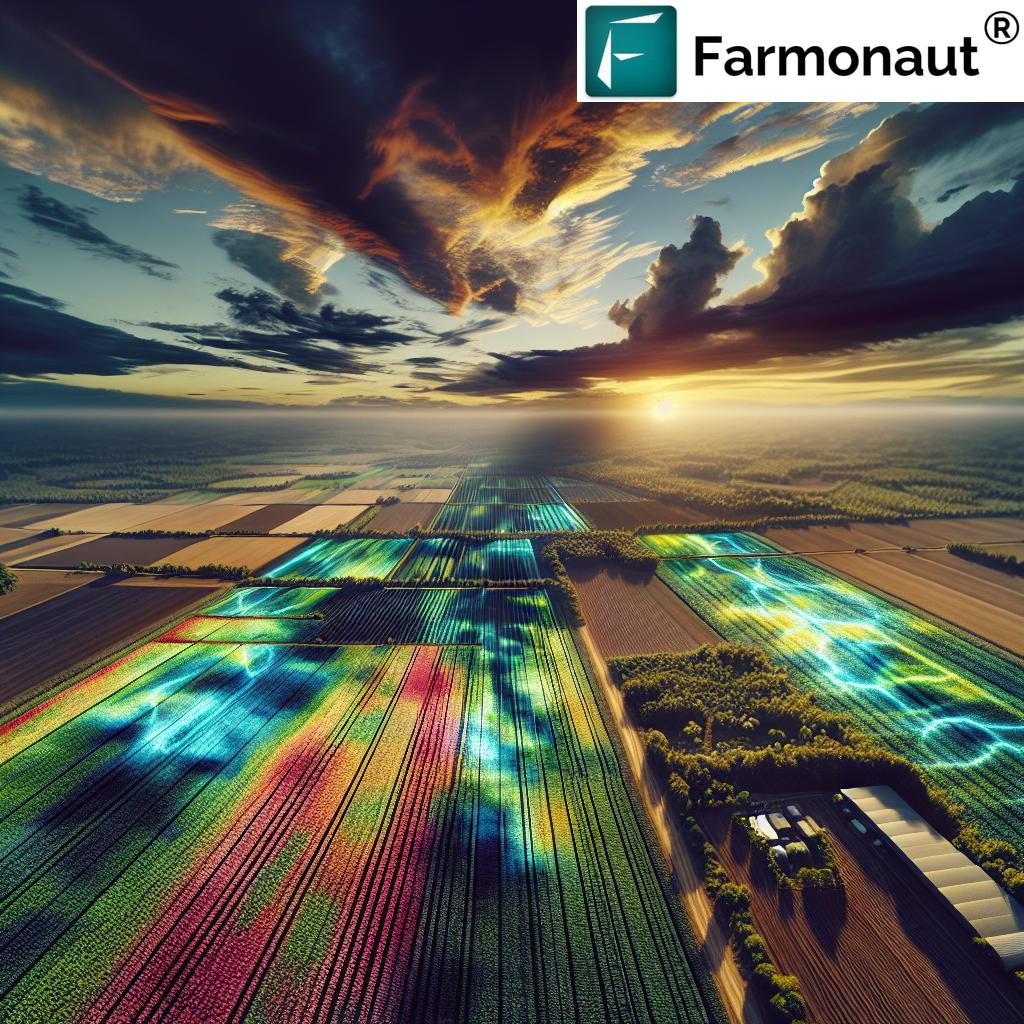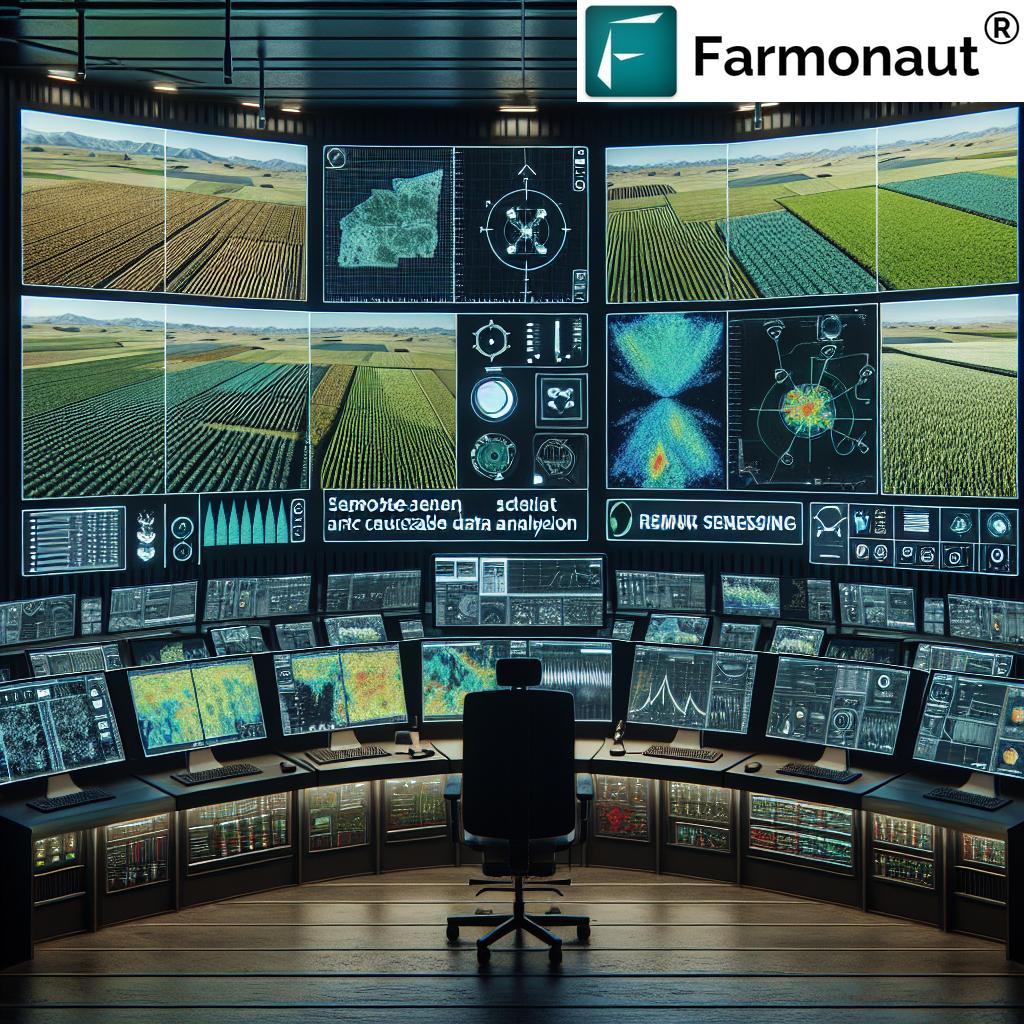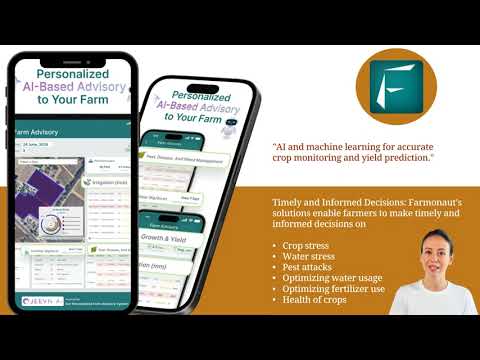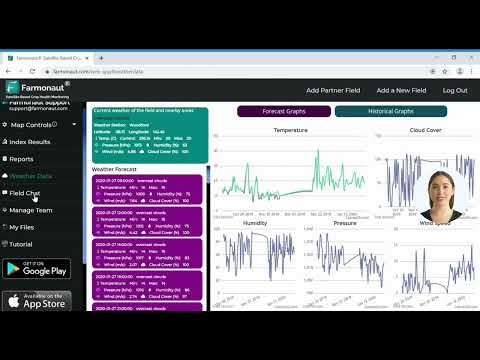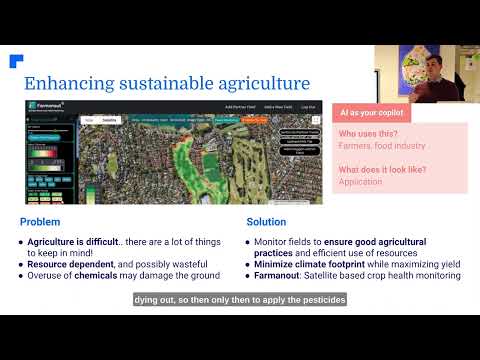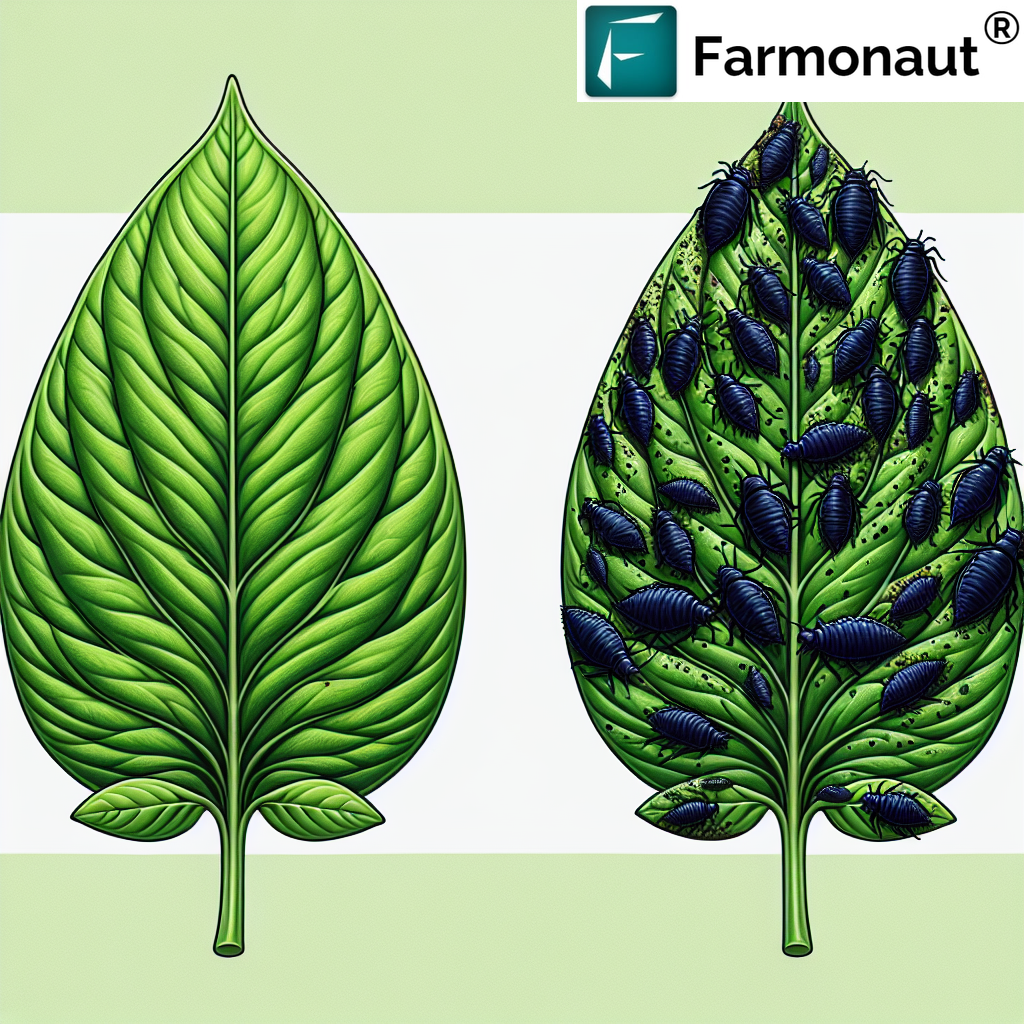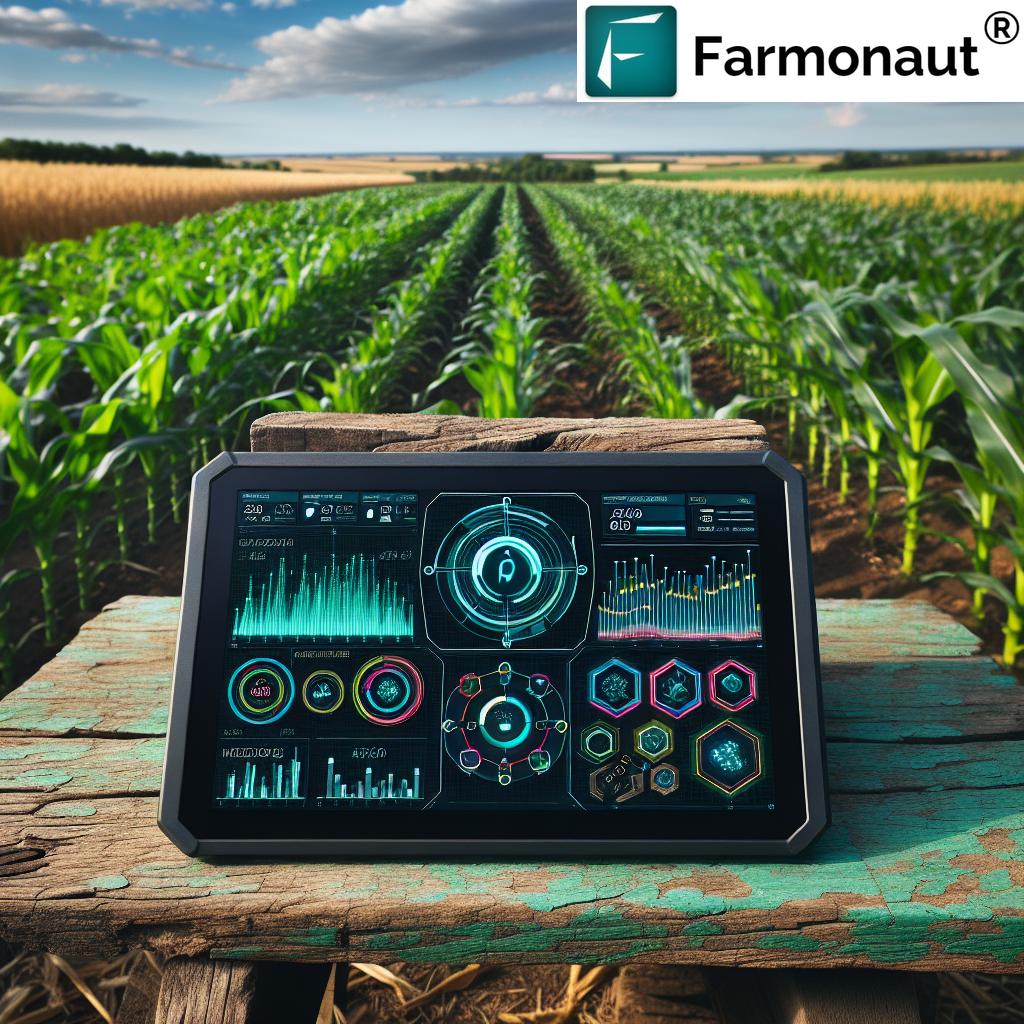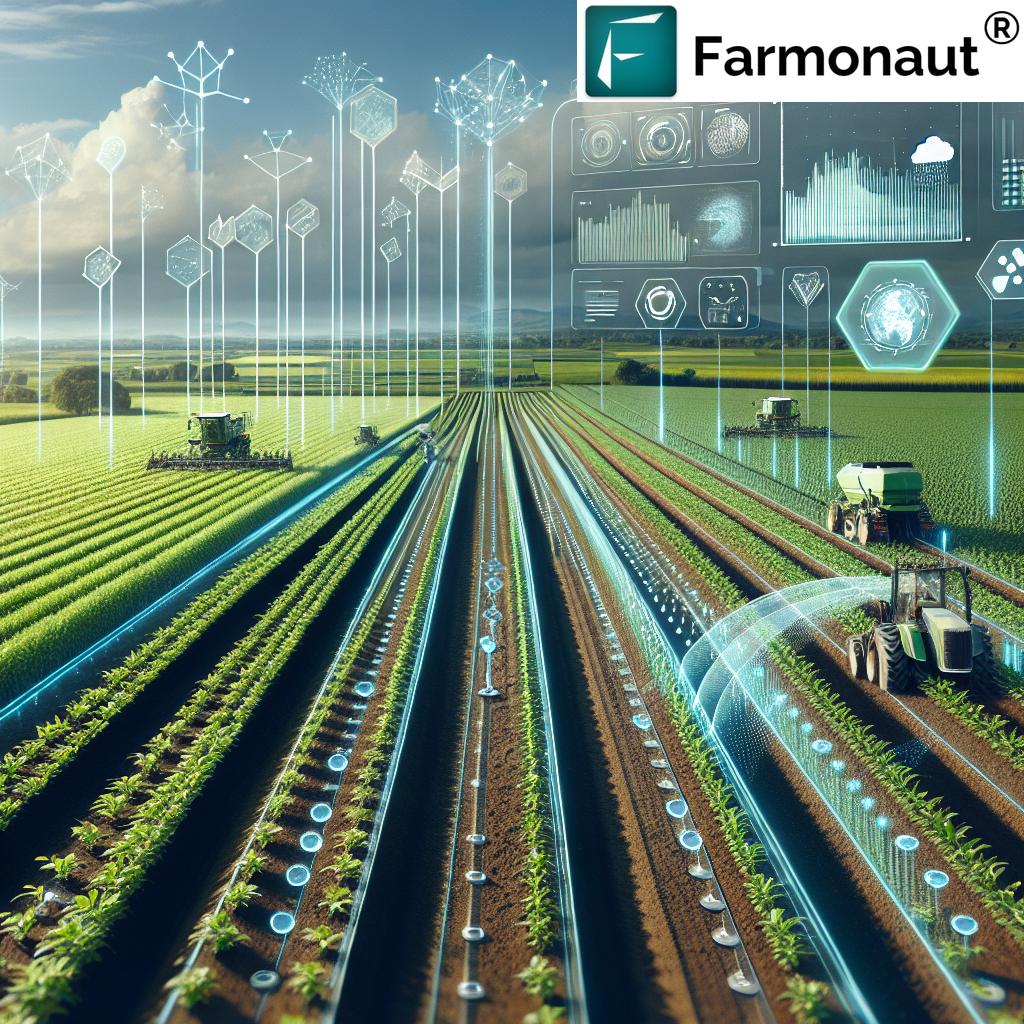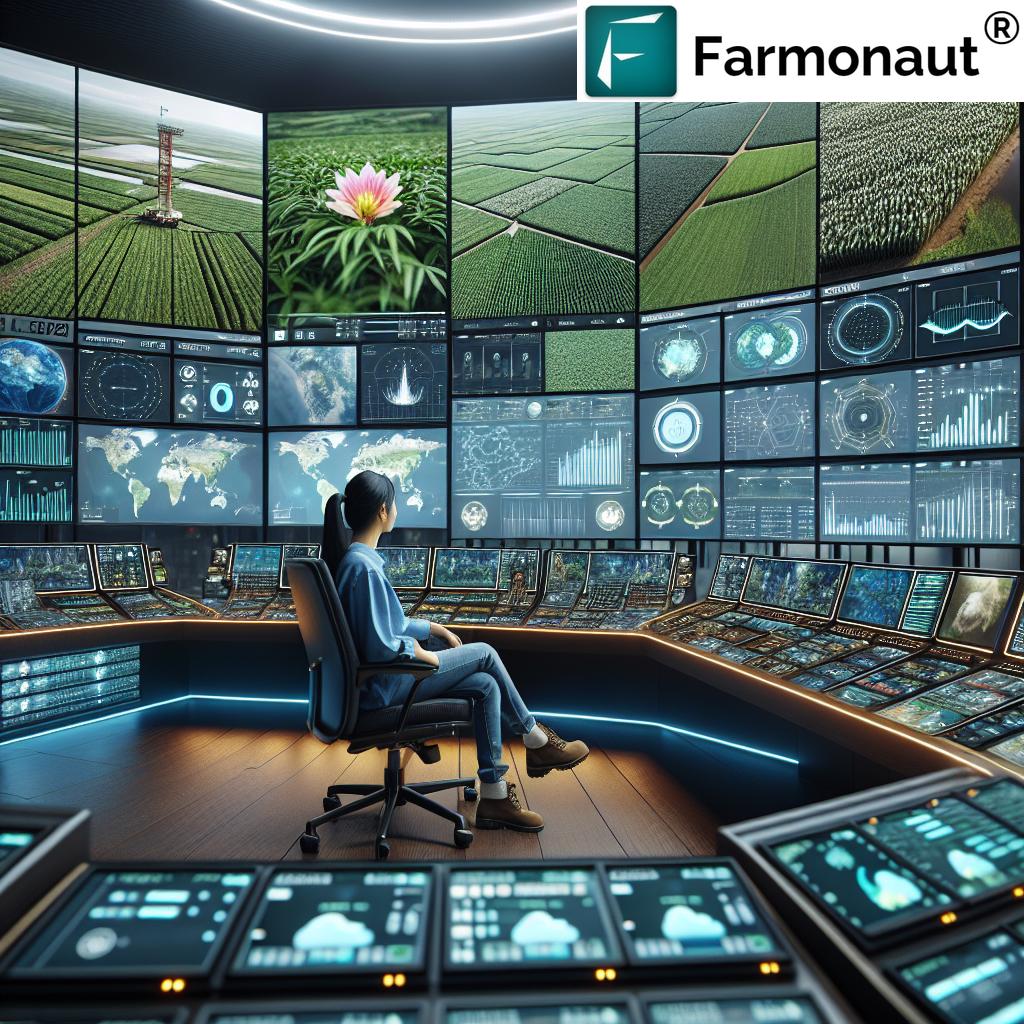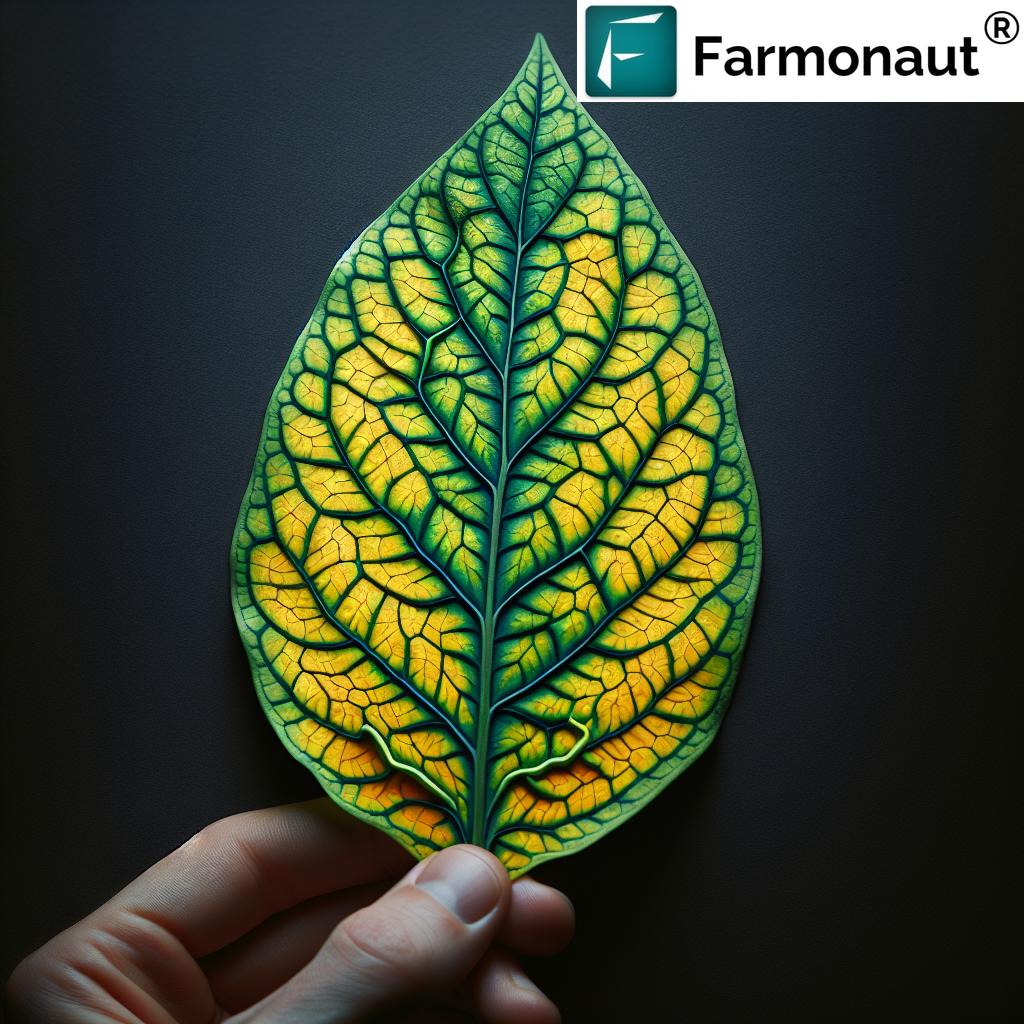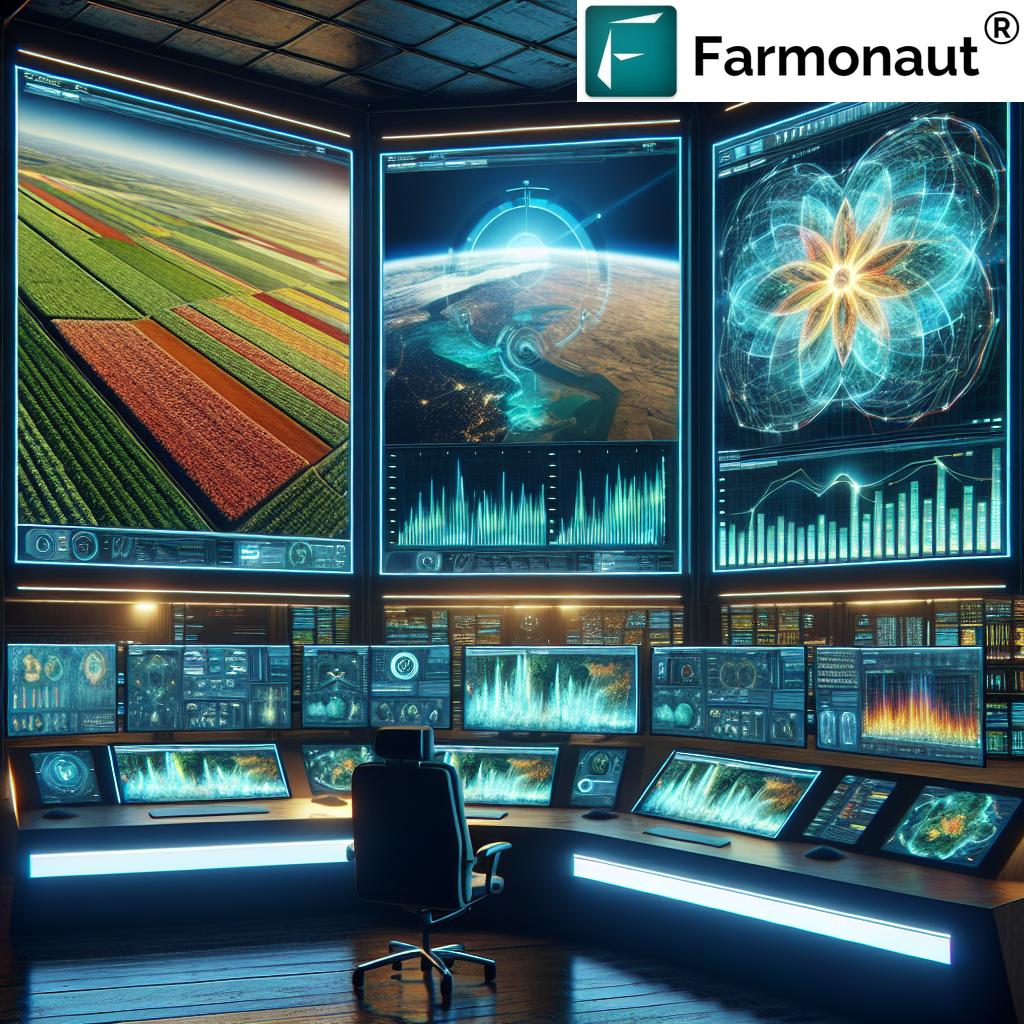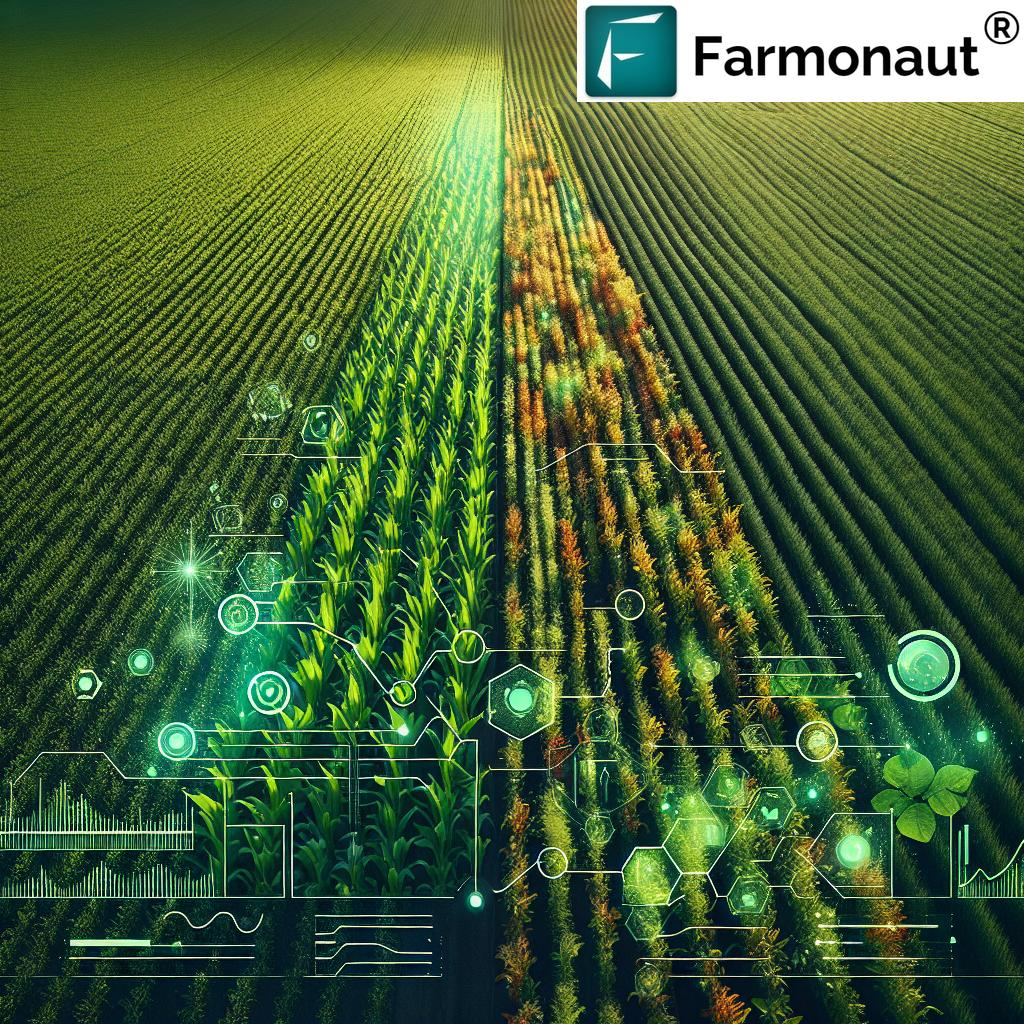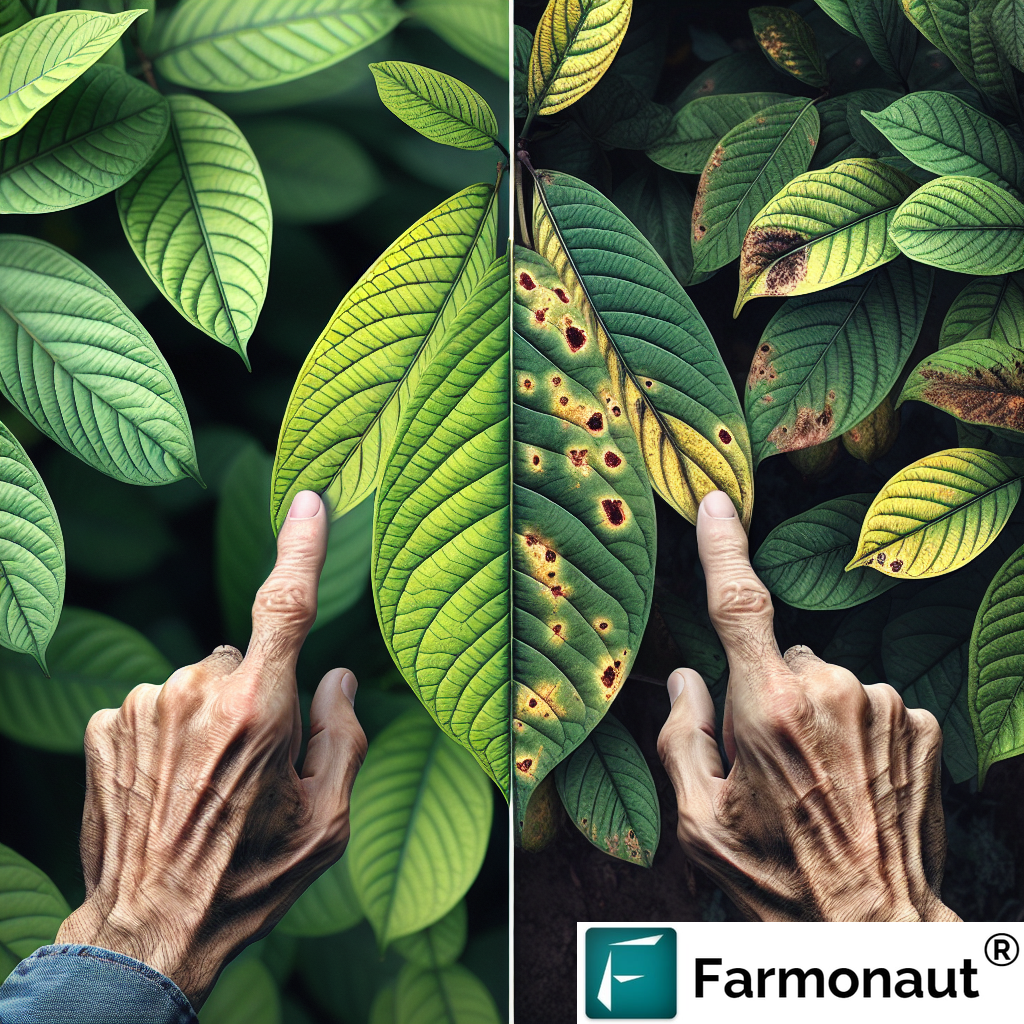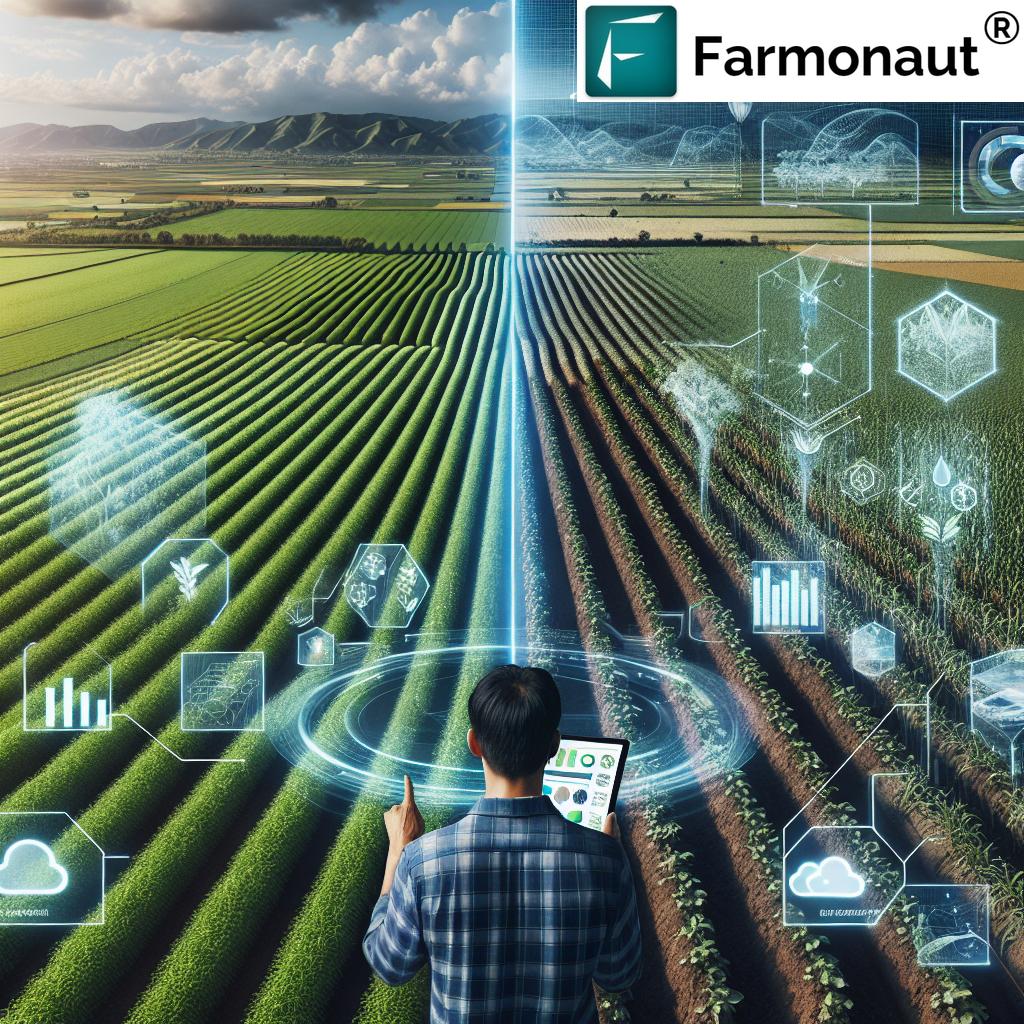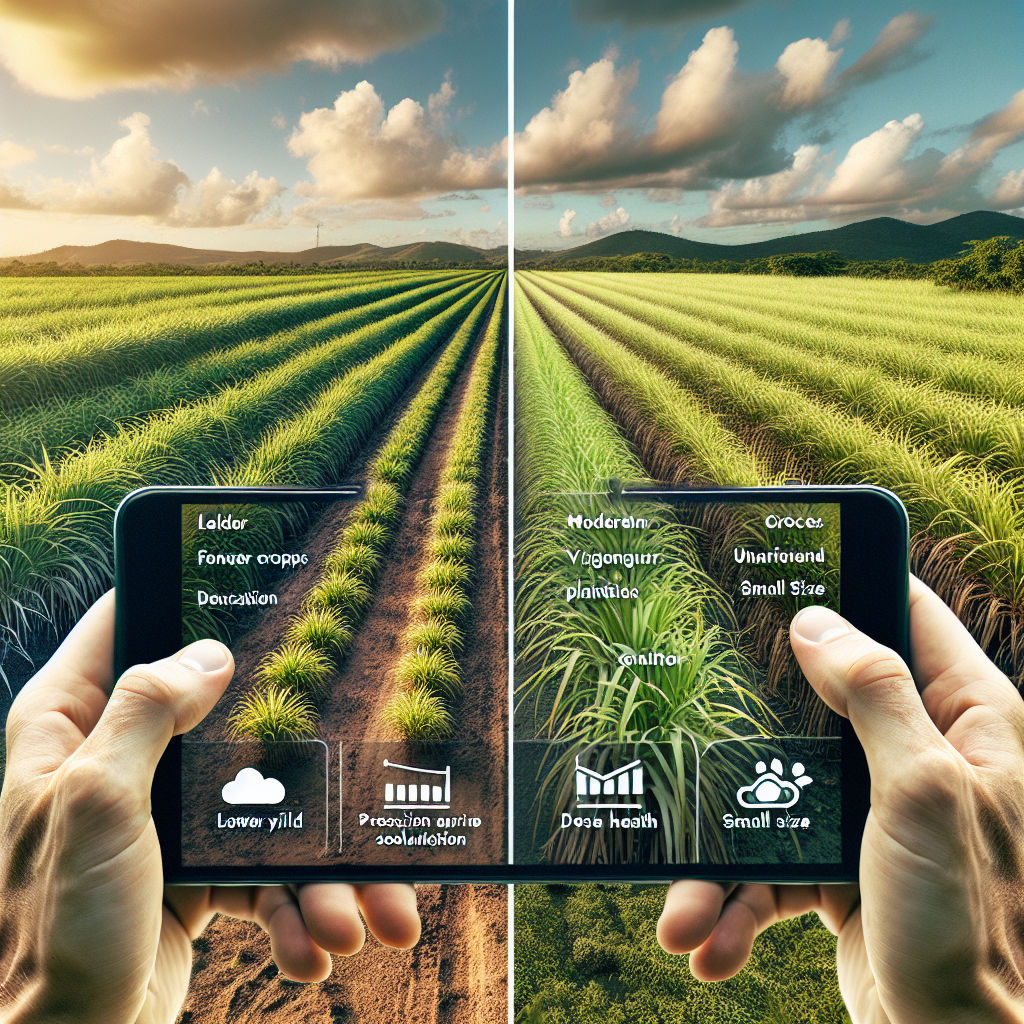Table of Contents
- Introduction: Imaging Technology for Precision Agriculture
- 5 Shocking Trends in Precision Agriculture Imaging Technologies
- Comparative Table: Key Imaging Technologies in Precision Agriculture
- Deep Dive: Essential Imaging Technologies Transforming Agriculture
- Market Growth & Adoption—Looking Beyond 2024
- Farmonaut’s Role: Making Precision Agriculture Imaging Affordable, Accessible, and Scalable
- Challenges, Considerations, and the Road to Sustainable Farming
- Future Outlook: The Next Decade of Imaging in Precision Agriculture
- Frequently Asked Questions (FAQ)
“By 2027, the precision agriculture imaging technology market is projected to surpass $1.2 billion globally.”
Imaging Technology for Precision Agriculture Market: 5 Shocking Trends!
In the last decade, imaging technologies have irreversibly reshaped the face of precision agriculture. By empowering farmers to monitor crop health, optimize resource use, and enhance yields, advanced imaging solutions are rapidly redefining what’s possible for modern agriculture around the world.
Today, we’re witnessing a transformation: from the adoption of high-resolution drones and multispectral/hyperspectral imaging to the surge in AI-powered agricultural data analysis and the mainstream use of satellite imaging for agriculture. These technologies don’t just increase productivity—they also support sustainable farming practices and a new era of environmental responsibility.
In this comprehensive guide, we’ll unravel the 5 most shocking trends shaping the future of the imaging technology market for precision agriculture. As we look deeper, we’ll highlight how solutions like Farmonaut are making these tools affordable and easy to use—bridging the gap between advanced techniques and farmers of all scales.
5 Shocking Trends in Precision Agriculture Imaging Technologies
It’s not an exaggeration to say that imaging technology in agriculture has become the backbone of smart, efficient, and data-driven farming. But what are the trends causing disruption and driving growth in this sector? Let’s break them down:
- Explosion in Multispectral & Hyperspectral Imaging
- Democratization of Drone-Based Monitoring
- Integration with Artificial Intelligence & Machine Learning
- 3D Mapping Through LiDAR and Satellite Imaging
- Focus on Sustainable Resource Optimization
Each of these trends is underpinned by the ongoing need to monitor crop health in real-time, optimize costs, and scale sustainable practices for long-term agricultural viability—be it in India, the Asia-Pacific region, or global farmlands.
Comparative Trends Table: Key Imaging Technologies in Precision Agriculture
For an at-a-glance understanding, here’s how the leading imaging technologies stack up by 2025 in their applications, impact, and adoption:
| Technology | Practical Applications | Adoption (% by 2025) | Key Benefits | Sustainability Impact |
|---|---|---|---|---|
| Drone Imaging | Aerial crop monitoring, real-time stress detection, soil/irrigation analysis. | 58% | Rapid issue detection, reduced manual scouting, targeted intervention. | Cuts unnecessary input use by up to 25%, lowers carbon footprint. |
| Multispectral Imaging | Crop health analysis, nutrient deficiency mapping, disease detection. | 63% | Increases yield by 10–15%, optimizes fertilizer and water application. | Supports sustainable farming by minimizing overuse of chemicals/fertilizer. |
| Hyperspectral Imaging | Early stress/disease identification, crop quality assessment, plant breeding. | 32% | Granular detection at plant level, superior spectral insights. | Facilitates eco-friendly pest, water, and nutrient management. |
| Satellite Imaging | Large-scale crop monitoring, field/soil mapping, phenology tracking. | 67% | Macro-view for big farms/regions, long-term pattern analysis. | Improves land use, forest conservation, and agro-ecological balance. |
| AI-powered Analysis | Automated crop diagnostics, predictive yield modelling, advisory systems. | 51% | Reduces manual errors, speeds up decision-making, supports scalability. | Drives systemic sustainability by optimizing all resource inputs. |
“Over 60% of large farms now use multispectral imaging for real-time crop health analysis.”
Deep Dive: Essential Imaging Technologies Transforming Agriculture
Let’s explore each technology further, unraveling how imaging, data integration, and real-time monitoring are shaping the future of precision agriculture.
1. Multispectral and Hyperspectral Imaging: Elevating Crop Health Monitoring
Multispectral imaging captures data from several bands across the visible spectrum and beyond—usually including near-infrared. This enables farmers to detect early signs of crop stress, nutrient deficiencies, or disease invisible to the naked eye. Hyperspectral imaging takes this a step further by capturing hundreds of narrow spectral bands. The result? Incredibly granular data for precise analysis and actionable insights at the plant level.
- Detect subtle changes in chlorophyll and plant moisture, identifying stress before damage is visible.
- Monitor nutrient variability across entire fields for variable rate fertilization.
- Enable early detection of pest or disease outbreaks to trigger timely interventions.
The use of multispectral and hyperspectral imaging is a cornerstone in remote sensing in agriculture, especially for large farms in India, China, and the US—empowering local and regional agriculture alike.
2. Drone Technology in Farming: Eyes in the Sky, Precision on the Ground
Drones equipped with high-resolution cameras are revolutionizing how we monitor farmland, analyze crop health, and optimize input use. Their agility means they can cover hundreds of acres within minutes, offering ultra-current snapshots of field conditions.
- Map large farmland areas quickly with actionable, spatially precise data
- Assess moisture levels, plant density, and spot irrigation issues
- Address pest, disease, or nutrient deficiencies promptly for maximum yield protection
With drone technology in farming becoming increasingly affordable, it’s closing the gap for small and medium-sized farms, not just large-scale operations.
3. LiDAR Technology in Farming: 3D Analysis for Soil and Crop Optimization
LiDAR (Light Detection and Ranging) technology works by illuminating targets with laser light, measuring reflected signals to create detailed three-dimensional maps of fields, crop canopies, or even entire plantations.
- Enables accurate soil analysis in agriculture, revealing micro-topographies for water flow optimization
- Aids in precision planting and land leveling
- Helps monitor plant height, biomass, and overall vegetation structure
With LiDAR technology in farming, we’re not just monitoring crops—we’re engineering entire fields for optimized resource use and efficiency.
4. Satellite Imaging for Agriculture: Macro Insights from Space
Satellite imaging provides macro-layered perspectives for large farms, regional planners, and governments. Modern satellites offer multispectral data that can power massive scale agricultural operations, policy decisions, and disaster/insurance management.
- Monitor crop patterns and biophysical changes over thousands of hectares
- Track weather forecasts, soil moisture variations, and plant growth cycles
- Support national food security initiatives and remote monitoring for insurance verification
Global adoption of satellite imaging for agriculture is set to rise, especially with platforms like Farmonaut democratizing access to frequent and detailed satellite-driven crop insights.
5. AI-Powered Analysis: Turning Big Data into Smarter Farming Decisions
The most transformative trend? AI-powered data analysis and decision support systems. By integrating satellite, drone, multispectral, and hyperspectral data, advanced AI platforms deliver actionable recommendations—reducing manual labor and errors.
- Provide farmers with tailored advice on irrigation schedules, fertilizer doses, and pest control
- Enable predictive analytics for yield forecasting and risk reduction
- Accelerate adoption of resource-efficient and sustainable farming practices
Leading solutions—like Farmonaut—harness machine learning for real-time insights, making smart farming accessible not only to agribusinesses but also to the everyday farmer.
Market Growth & Adoption—Looking Beyond 2024
The global market for imaging technologies in precision agriculture has witnessed dramatic growth—evolving from niche to necessity.
Key figures:
- 2022: Crop monitoring generated $631 million in global revenue.
- 2028: Projected to reach $1.238 billion for crop monitoring alone; overall markets trending toward $1.691 billion (Businesswire).
- Asia-Pacific: Smart farming adoption, government initiatives, and food security needs make this the fastest-growing region globally.
- Satellite imaging, drone imaging, and AI-driven analysis see the steepest adoption curves, especially on large and remote farms.
These statistics reinforce the message: Precision agriculture imaging technologies aren’t a luxury—they’re critical for increasing farm productivity, reducing costs, and securing global food chains.
For developers and tech innovators: Integrate satellite and weather data directly into your custom apps—explore the Farmonaut Satellite & Weather API and detailed API Developer Docs for seamless agricultural data solutions.
Farmonaut’s Role: Making Precision Agriculture Imaging Affordable, Accessible, and Scalable
At Farmonaut, we’re committed to putting advanced imaging and AI-powered data analysis into the hands of every farmer, agribusiness, and agricultural policymaker.
- Satellite-Based Crop Health Monitoring: Our platform delivers real-time, multispectral satellite images, providing insights on NDVI, soil moisture, plant health status, and input optimization. No extra hardware investment required!
- AI Advisory & Automated Crop Management: With Jeevn AI, farmers access weather forecasts, management strategies, and data-driven recommendations tailored to their crop and soil analysis—enhancing yield and efficiency.
- Resource & Fleet Management: Track machinery, plan routes, and manage agricultural operations efficiently with our dedicated fleet management tools. Discover more about fleet management benefits here.
- Blockchain-Driven Traceability: Ensure transparency in supply chains; know exactly where agricultural produce comes from and enhance consumer trust.
Learn about product traceability for agriculture and food industries. - Carbon Footprinting: Monitor and minimize your farm’s or business’s environmental impact with emission tracking and compliance reports.
Explore our carbon footprinting solution for sustainable agribusiness. - Crop Loan & Insurance: We provide satellite-based verification helping financial institutions deliver credible loans and insurance. Lower fraud risks and increase access for farmers. Learn how crop loan & insurance are changing with imaging tech.
- Large-Scale & Forest Plantations: Our tools scale to serve large farms, plantations, or forestry projects—delivering actionable, multi-source imaging and remote sensing.
See how large scale management is becoming data-driven.
Value Proposition: Unlike traditional hardware-based systems, Farmonaut delivers these solutions via web, Android, iOS apps, and APIs, ensuring cost-effectiveness and accessibility for individual farmers, cooperatives, agribusinesses, and governments.
Accessibility: Users can access our services through a user-friendly web and mobile app, or integrate via API. Our subscription-based platform provides flexibility, allowing you to start small and scale as your needs grow.
Transparent, Evidence-Backed Advisory: Our blockchain-based traceability and real-time reporting deliver unequivocal trust and transparency—for crops and agricultural products worldwide.
Challenges, Considerations, and the Road to Sustainable Farming
While the benefits of precision agriculture imaging technologies are monumental, it’s critical to remain aware of the sector’s unique challenges and ongoing considerations.
1. High Initial Investment
Many imaging systems—especially drones, LiDAR, or proprietary hardware—still require significant upfront costs for specialized equipment, software, and skilled personnel. Platforms like Farmonaut are bridging this gap by delivering affordable, hardware-free solutions that lower the cost barrier for farmers and agri-enterprises worldwide.
2. Data Privacy and Security
The digital transformation of agriculture brings concerns over data privacy, ownership, and security. Storing sensitive farm and crop data must comply with best-in-class industry and government standards. Blockchain-based audit trails, as offered by Farmonaut’s traceability solutions, can help build transparency and trust.
3. Regulatory Ambiguity Around Drones and Remote Sensing
In many countries, regulations for commercial UAV (drone) applications are still evolving, requiring special clearances or limiting flights in certain regions. A combined approach—leveraging satellite imaging and drones where legally possible—maximizes coverage and minimizes regulatory friction.
4. Learning Curve and Digital Literacy
Successful adoption depends on training users—from smallholder farmers to agri-enterprise managers—on how to read, interpret, and act on imaging-based data and analyses. Platforms prioritizing intuitive design and localized advisory, like Farmonaut, help flatten the learning curve.
5. Reliable Connectivity and Infrastructure
True precision agriculture depends on access to reliable internet (for real-time imagery and advisory) and robust backend support. Advances in mobile-first solutions, satellite communication, and edge computing continue to overcome these systemic limitations, especially in remote and rural areas.
Future Outlook: The Next Decade of Imaging in Precision Agriculture
As we approach 2028, imaging technology for precision agriculture is on track to reframe the very foundations of food production, resource stewardship, and environmental sustainability.
- Smart Integration: Continued convergence of AI, IoT, satellite, and drone data streams will empower farmers to make ultra-precise, instant decisions from virtually anywhere.
- Universal Accessibility: The cost of imaging and remote sensing will continue to drop, thanks to cloud platforms, shared APIs, and subscription models tailored for every scale—from a 1-acre farm in India to a multi-thousand-hectare operation in Brazil.
- Sustainability at the Core: With carbon foot-printing and input optimization tools now at every farmer’s fingertips (see Farmonaut’s carbon footprinting solution here), the industry is set to lead the charge in climate-resilient agriculture.
- Global Food Security: High-resolution, near-real-time data will underpin coordinated responses to droughts, disease threats, or supply disruptions, enhancing global resilience.
Whether you are a grower, policymaker, input supplier, or technologist, the call to action is clear: Embrace the future of farming by leveraging the best imaging, analysis, and data tools available—and let’s create a more productive, sustainable, and food-secure world.
Frequently Asked Questions (FAQ)
What are the main imaging technologies used in precision agriculture?
The leading technologies are multispectral and hyperspectral imaging, thermal imaging cameras, LiDAR (for 3D mapping), satellite imaging, and drone-based imaging. These tools help farmers monitor crop health, detect nutrient deficiencies, map soil variability, optimize water schedules, and forecast yields.
How does Farmonaut make imaging technology accessible for farmers?
Farmonaut uses satellite-based imaging, multispectral analysis, and AI-driven advisory tools—all accessible via web, Android, iOS apps, and API—making advanced precision agriculture affordable and scalable for farms of any size.
Why is AI integration important in agricultural imaging?
AI allows for the automatic analysis of vast datasets—detecting crop stress, forecasting yields, personalizing irrigation and input schedules—all in real time. This minimizes manual errors, speeds up response times, and enhances farm productivity.
What are the top benefits of using imaging in agriculture?
- Boosts yields by enabling precise input application and early disease/nutrient deficiency detection.
- Reduces environmental impact and optimizes water, fertilizer, and pesticide use.
- Supports transparent supply chains via traceability.
- Empowers farmers to make real-time, data-driven decisions.
Is Farmonaut suitable for smallholders and large agribusinesses alike?
Absolutely! Farmonaut’s flexible, subscription-based model is proven to deliver actionable imaging and advisory at both small and very large scale. The solution adapts to diverse field sizes and operational requirements.
How is imaging technology driving sustainability in agriculture?
By monitoring resource use, detecting early signs of crop health issues, and facilitating minimal, targeted interventions, these technologies help minimize environmental impact—making farming more efficient and sustainable.
How can one access Farmonaut’s imaging and advisory features?
Users simply sign up for a Farmonaut subscription through the web, Android, or iOS app, or access services via API for more advanced integrations.
Get started with Farmonaut here.
Does Farmonaut help with environmental compliance and traceability?
Yes. Farmonaut offers carbon footprinting modules and blockchain-based traceability so users and brands can showcase compliance and build trust throughout the supply chain.
Where can I learn more about the technical capabilities of Farmonaut?
Detailed technical documentation and APIs are available on our API docs page.
Conclusion: Imaging Technology for Precision Agriculture—Toward a New Era
Imaging technology has become the fulcrum for modern precision agriculture, empowering farmers and agribusinesses with unmatched insights, efficiency, and productivity. By leveraging drones, multispectral and hyperspectral imaging, LiDAR, satellite data, and AI-powered analysis, we’re rewriting the fundamental rules of crop health monitoring and sustainable farming.
Platform innovations from Farmonaut ensure these advanced technologies are now more accessible, affordable, and actionable than ever, fostering optimization, transparency, and resilient global supply chains. The future belongs to data-driven, sustainable, and efficient agricultural practices—and together, we’re making it a reality.
Are you ready to join the revolution?
Experience Farmonaut’s imaging technology now!



